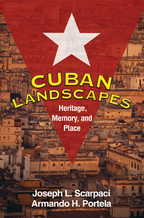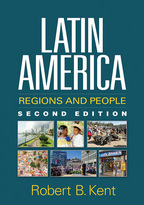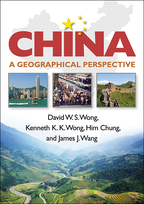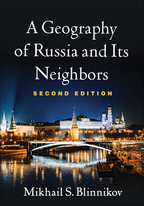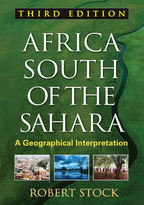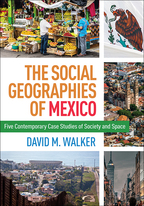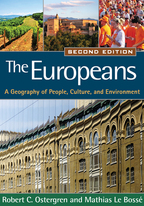Cuban Landscapes
Heritage, Memory, and Place
Joseph L. Scarpaci and Armando H. Portela
Paperbacke-bookprint + e-book
Paperback
orderJuly 7, 2009
ISBN 9781606233238
Price: $43.00216 Pages
Size: 6" x 9"
“What a great idea for a book. Joseph Scarpaci and Armando Portela examine the many fascinations of Cuba—including history, music, revolutions, relations with the United States, sugar industry past, tourism industry present, potential of the future—through the lens of landscape. And, what an appropriate and useful lens it is....Cuban Landscapes also has appeal beyond the academy, for it speaks to applied pursuits such as planning and development....It includes a great deal of information, based both on fairly up-to-date secondary data and primary research by the authors. A large number of tables, graphs, maps, and photographs supplement and enhance the text. Beyond simply dry data, however, shine some of the anecdotes that give life to the larger concepts.”

—Geographical Review
“The collaboration between a Human Geographer (Joseph Scarpaci) and a Physical Geographer (Armando Portela) brings together their vast scholarly and personal experiences on the island of Cuba in a fitting human-environment landscape approach. As such, it is an important addition not only to the literature on landscape, but also presents a fascinating insight into the ever-evolving representations of Cuba....An excellent contribution to the study of landscapes in general, and Cuba specifically. The authors negotiate the political terrain deftly, presenting many viewpoints while avoiding overt bias in their coverage. Considering the rapid changes Cuba has undergone in the past twenty years, from the loss of Soviet support to the resignation of Fidel, this text serves as an important and timely work that sets the stage for observing changes in the landscape—literally and figuratively—that are, and will continue, to occur.”

—Journal of Cultural Geography
“A noteworthy book that provides insight into the intricacies and nuances of Cuban society. Moreover, Scarpaci and Portela demonstrate the value of using landscapes both as subject matter and as a conceptual lens to explore the complexities of urban society.”

—Journal of Planning Education and Research
“Generates an imagination of Cuba in a way that critically brings to light romanticism, scenic beauty, contestation, nationalism, and environmental degradation....I found this book to be informative. This work contributes substantially to the broader literature on landscape, memory, and place. The authors expand on theory and terminology to highlight the critical nature of landscape conceptualizations, with informative images, tables, and maps significantly complementing the text. I would recommend this book to professors or instructors teaching a host of cultural/social oriented courses in geography, specifically human, political, and regional Latin America courses at the undergraduate levels. Furthermore, this timely research will promote and generate significant discussions in graduate seminars focusing on landscape, memory, and place, or tourism. In conclusion, this book will add diversity to reading lists and encourage students to think critically and imaginatively about the place of Cuba in both contemporary and historical contexts.”

—Journal of Material Culture
“Cuban Landscapes' descriptive and accessible nature makes it suitable for undergraduate study or indeed for anyone who wants to know about the Cuba beyond the mojito. Its assertions are supported by a variety of sources, and contextualised and illuminating analyses create a text that can be appreciated by a broad range of readers.”

—Environment and Planning B: Planning and Design
“This book is a welcome addition to the literature on Cuba and a joy to read. Weaving together historical and contemporary themes, it provides a deeply contextualized impression of Cuban landscapes over time. The authors are serious scholars of Cuba who have written a book that can be read and appreciated by people across the political spectrum. This is essential reading for anyone embarking on a trip to Cuba, especially one that goes beyond Havana.”

—Thomas Klak, Director, Latin American Studies Program, Miami University, Oxford, Ohio
“Full of interesting data for researchers and visitors, this book offers multiple views of Cuba, knitting together stitches of such diverse disciplines as geography, landscape architecture, urban planning, sociology, and fine arts. I especially recommend it to readers who want to be well informed on the many nuances of Cuba and cubanidad—something the book captures on page after page. Written by renowned researchers who have long studied the country, the book demonstrates that Cuban landscapes are far more complex than the idyllic impressions displayed in tourist magazines.”

—Victor Marin, UNESCO Chair, National Center for Conservation, Restoration and Museology, Havana, Cuba
“Scarpaci and Portela give us a fascinating and revealing picture of the many 'Cuban landscapes' that make up the reality of Cuba past and present. Their canvas is ambitiously broad in its historical sweep and its range of sources and materials, but it nonetheless excels in the detail—from Humboldt's nineteenth-century observations to Cuba's love/hate relationship with sugar and the images and landscapes that Cuba projects to tourists. The result is visually expressive and conceptually masterful.”

—Antoni Kapcia, Director, Centre for Research on Cuba, University of Nottingham, UK
“Cuban Landscapes is overflowing with original and very useful landscapes of its own—musical, historical, urban, rural, agricultural, industrial, cartographic, touristic, artistic, economic, and theoretical. This innovative, eclectic volume manages to synthesize a wide variety of analytic approaches to Cuba's unique physical, historical, and cultural geography, making the book simultaneously intellectually engaging and visually stimulating.”

—Ted Henken, Departments of Sociology and Black and Hispanic Studies, Baruch College, City University of New York
“This is a book that will make you think—about how the landscapes of Cuba were made, what they represent today, and how they have changed. The authors skillfully recount the histories of deforestation, sugar plantations, railroad expansion, urban development, tourism, and political ideology, all reflected through the prisms of landscape elements. The vibrant text and the numerous thoughtfully selected images allow many Cubas to come alive. This is a volume to open the eyes of undergraduates and would-be travelers, or to be debated in graduate seminars. Cuban Landscapes challenges us to derive meaning from what is visible on this complex Caribbean island.”

—David J. Robinson, Department of Geography, Syracuse University
—Geographical Review
“The collaboration between a Human Geographer (Joseph Scarpaci) and a Physical Geographer (Armando Portela) brings together their vast scholarly and personal experiences on the island of Cuba in a fitting human-environment landscape approach. As such, it is an important addition not only to the literature on landscape, but also presents a fascinating insight into the ever-evolving representations of Cuba....An excellent contribution to the study of landscapes in general, and Cuba specifically. The authors negotiate the political terrain deftly, presenting many viewpoints while avoiding overt bias in their coverage. Considering the rapid changes Cuba has undergone in the past twenty years, from the loss of Soviet support to the resignation of Fidel, this text serves as an important and timely work that sets the stage for observing changes in the landscape—literally and figuratively—that are, and will continue, to occur.”
—Journal of Cultural Geography
“A noteworthy book that provides insight into the intricacies and nuances of Cuban society. Moreover, Scarpaci and Portela demonstrate the value of using landscapes both as subject matter and as a conceptual lens to explore the complexities of urban society.”
—Journal of Planning Education and Research
“Generates an imagination of Cuba in a way that critically brings to light romanticism, scenic beauty, contestation, nationalism, and environmental degradation....I found this book to be informative. This work contributes substantially to the broader literature on landscape, memory, and place. The authors expand on theory and terminology to highlight the critical nature of landscape conceptualizations, with informative images, tables, and maps significantly complementing the text. I would recommend this book to professors or instructors teaching a host of cultural/social oriented courses in geography, specifically human, political, and regional Latin America courses at the undergraduate levels. Furthermore, this timely research will promote and generate significant discussions in graduate seminars focusing on landscape, memory, and place, or tourism. In conclusion, this book will add diversity to reading lists and encourage students to think critically and imaginatively about the place of Cuba in both contemporary and historical contexts.”
—Journal of Material Culture
“Cuban Landscapes' descriptive and accessible nature makes it suitable for undergraduate study or indeed for anyone who wants to know about the Cuba beyond the mojito. Its assertions are supported by a variety of sources, and contextualised and illuminating analyses create a text that can be appreciated by a broad range of readers.”
—Environment and Planning B: Planning and Design
“This book is a welcome addition to the literature on Cuba and a joy to read. Weaving together historical and contemporary themes, it provides a deeply contextualized impression of Cuban landscapes over time. The authors are serious scholars of Cuba who have written a book that can be read and appreciated by people across the political spectrum. This is essential reading for anyone embarking on a trip to Cuba, especially one that goes beyond Havana.”
—Thomas Klak, Director, Latin American Studies Program, Miami University, Oxford, Ohio
“Full of interesting data for researchers and visitors, this book offers multiple views of Cuba, knitting together stitches of such diverse disciplines as geography, landscape architecture, urban planning, sociology, and fine arts. I especially recommend it to readers who want to be well informed on the many nuances of Cuba and cubanidad—something the book captures on page after page. Written by renowned researchers who have long studied the country, the book demonstrates that Cuban landscapes are far more complex than the idyllic impressions displayed in tourist magazines.”
—Victor Marin, UNESCO Chair, National Center for Conservation, Restoration and Museology, Havana, Cuba
“Scarpaci and Portela give us a fascinating and revealing picture of the many 'Cuban landscapes' that make up the reality of Cuba past and present. Their canvas is ambitiously broad in its historical sweep and its range of sources and materials, but it nonetheless excels in the detail—from Humboldt's nineteenth-century observations to Cuba's love/hate relationship with sugar and the images and landscapes that Cuba projects to tourists. The result is visually expressive and conceptually masterful.”
—Antoni Kapcia, Director, Centre for Research on Cuba, University of Nottingham, UK
“Cuban Landscapes is overflowing with original and very useful landscapes of its own—musical, historical, urban, rural, agricultural, industrial, cartographic, touristic, artistic, economic, and theoretical. This innovative, eclectic volume manages to synthesize a wide variety of analytic approaches to Cuba's unique physical, historical, and cultural geography, making the book simultaneously intellectually engaging and visually stimulating.”
—Ted Henken, Departments of Sociology and Black and Hispanic Studies, Baruch College, City University of New York
“This is a book that will make you think—about how the landscapes of Cuba were made, what they represent today, and how they have changed. The authors skillfully recount the histories of deforestation, sugar plantations, railroad expansion, urban development, tourism, and political ideology, all reflected through the prisms of landscape elements. The vibrant text and the numerous thoughtfully selected images allow many Cubas to come alive. This is a volume to open the eyes of undergraduates and would-be travelers, or to be debated in graduate seminars. Cuban Landscapes challenges us to derive meaning from what is visible on this complex Caribbean island.”
—David J. Robinson, Department of Geography, Syracuse University

